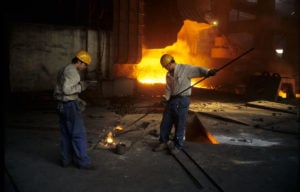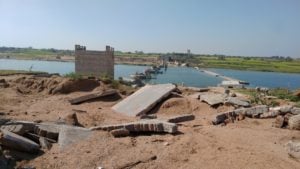Despite vagueness around the exact scope of China’s announcement last September to end support for new coal power plants overseas, this new stance has already seen 15 pre-construction coal power plant projects with Chinese backing either shelved or cancelled, according to a recent analysis by the Centre for Research on Energy and Clean Air (CREA).
After examining the wording of the first official interpretation of the pledge, jointly issued last month by four central government ministries, we found that a further 45 pre-construction coal power plant projects could be re-examined, with the potential for around 70% of them to be scrapped.
The interpretation document, the “Guiding Opinions on the Joint Implementation of Green Development in the Belt and Road Initiative” (the “Opinions”), also leaves the door open to further cancellations or conversions of coal power projects because it recommends that firms involved with under-construction plants proceed “cautiously”.
However, remaining grey areas, as well as apparent loopholes for coal power plants in industrial parks and restarted projects, are holding back the potential of the pledge to fundamentally transform China’s role in developing countries’ energy sectors, slowing the move towards supporting and accelerating low-carbon transitions.
Quantifying the impact of China’s no coal pledge
Released by the National Development and Reform Commission (NDRC), the Ministry of Foreign Affairs (MFA), the Ministry of Ecology and Environment (MEE) and the Ministry of Commerce (MOFCOM), the “Opinions” provided three key clarifications on how the pledge on new overseas coal power plant projects will be implemented.
Firstly, the “Opinions” clarified that China will not build any new coal power plants overseas, ordering a full stop to all “new build” projects. This appears to cover and halt all pre-construction projects with Chinese backing, whether in the form of financing or engineering, procurement and construction (EPC) contracts with Chinese energy firms. According to our analysis, this should provide the impetus for Chinese and host country financial institutions and developers to re-examine 45 Chinese-backed overseas coal plants currently in the pre-construction phase, or a total capacity of 57 gigawatts (GW).
We estimate that 32 Chinese-backed overseas coal plants, amounting to a total of 37 GW capacity, should be unequivocally stopped, as they haven’t started construction nor secured financial or EPC contracts. The remaining capacity could still go forward, as construction and/or financing deals have already been signed, but the strictest implementation of the pledge should see them stopped as well.
Secondly, in regards to projects already “under construction”, the “Opinions” urge Chinese parties to proceed “steadily and cautiously”. Our analysis suggests this category will cover approximately 36 plants –29 GW of coal projects. It is highly likely that the majority of these projects will proceed, unless cancellations are initiated by stakeholders in host countries.
On the ground, many of these countries – such as Indonesia and Bangladesh – are contending with significant coal power overcapacity that could make this possible. The wording mostly leaves options open for Chinese firms to renegotiate projects in earlier stages of construction if there is sufficient reason, including failure to secure final financing and potential early stranding of these assets. Coal projects in construction could be converted to gas, redirected towards renewables such as solar and wind, or upgraded to adhere to stricter environmental standards, depending on the stage of construction and the existing build-out of supporting infrastructure.
Lastly, the official guidance suggests that Chinese companies and banks engaged in “already constructed” coal power projects overseas promote their “greening”, “strengthening” and “upgrading”. Most operating plants today were built in line with host countries’ often lax emission standards, allowing them to emit dangerous levels of pollution, in some cases more than double China’s own domestic requirements. Adopting international standards or China’s stricter standards for environmental protection, as the “Opinions” state, could see only the highly efficient and least-polluting coal plants remain on the grid as countries move away from coal.
We estimate that approximately 17 GW (across 18 plants) of operating overseas coal plants with Chinese equity could be the first to integrate these upgrades, which will require retrofitting plants with best available technologies to improve efficiency and reduce pollution. However, such retrofits should not be undertaken to extend the lifespan of an operating plant, which would serve to extend rather than reduce emissions. In addition, retrofits should be pursued with expedited coal-phaseout plans in place, in line with international environmental and climate change commitments. If coal plants in developing countries are expected to run until the International Energy Agency’s recommended 2040 phaseout date, their emissions will have massive health and economic costs that should be minimised by retrofits.
Emission control standards for existing and new coal plants in China and host countries
| Country | Sulphur oxides (new) | Sulphur oxides (existing) | Nitrous oxides (new) | Nitrous oxides (existing) | PM (new) | PM (existing) |
|---|---|---|---|---|---|---|
| China | 35 | 35 | 50 | 50 | 10 | 10 |
| Bangladesh | None | None | 275 | 275 | 150 | 150 |
| Indonesia | 200 | 550 | 200 | 250 | 50 | 100 |
| Pakistan | 50 | 50 | 300 | 300 | 500 | 500 |
| Phillipines | 700 | 1500 | 1000 | 1500 | 150 | 200 |
| South Africa | 500 | 3500 | 750 | 1100 | 50 | 100 |
| Vietnam (current) | 500 | 500 | 650 | 650 | 200 | 200 |
| Vietnam (proposed revision) | 130 | 250 | 40 | 80 | 150 | 100 |
In the wake of the Chinese government’s “Opinions” document, there is therefore a significant window of opportunity for host countries and developers to negotiate and shift investments towards low-carbon alternatives that are in line with China’s promise to support and finance a green energy transition.
Grey areas and exemptions
The “Opinions” make clear that any new project should be stopped. However, a number of recent contract signings expose grey areas around new coal power plants, falling into three categories: the construction of new coal power plants in existing BRI industrial projects; the expansion of existing coal power plants; and the revival of previously shelved projects.
Most concerning are two contracts for equipment and construction of power plants for major BRI-linked industrial nickel and steel developments in Indonesia. The first is an EPC agreement for Tianjin Electric Power Construction to construct a 1,520 MW nickel ore-supporting thermal power project in the Obi Island Industrial Park, signed on 14 February. No project technology is confirmed publicly, but the original proposal signed in 2018 by Ningbo Lygend and Indonesia’s Harita Group for the Obi Island park did include a 4.2 GW allocation for coal plants.
A second is an equipment supply contract for a 3 x 380 MW expansion of the existing Sulawesi Labota in Sumatra, signed by Anhui Electric Power Construction Engineering in December 2021. The power plant is also tied to steel and nickel processing at the Morowali Industrial Park – a project backed by Shanghai Dingxin Investment Group.
Chinese firms’ involvement in planned coal projects in industrial parks can progress separately from the ownership of the parks, in that industrial park developers need not directly finance coal projects built within the complex. However, if the industrial complexes make a guaranteed profit from power generated from the proposed coal plants, they are assuming financial risk for the project in the long term. This puts them at risk of future sensitivities around coal-generated steel and nickel – industries that China has also expressed support for greening.
These grey areas open up risks for Chinese developers and host countries to prolong the life of coal, rather than leapfrog to renewables
The recent revival of the Houaphanh power station in Laos highlights another grey area. A development agreement was signed for the project by the Laos government and China International Water & Electric Corporation in 2012, and a completed feasibility study and franchise agreement came in 2016, but actual construction never began and was assumed to be shelved. But this April, North China Electric Power Design Institute, a subsidiary of China Energy Engineering Corporation, won a bid for engineering design and technical support on a 350 MW project.
Last week, details emerged of another EPC contract, signed on 24 May, for a suspected coal power plant project in Laos. According to a publicly available document, private company Chinese Western Power signed a RMB2.76 billion (US$409 million) deal for the design and procurement of equipment for a 2x 330MW “supercritical clean energy power project”. The document does not specify the technology of the power plant, but the information provided limits the options to either coal or biomass. The use of ambiguous wording, however, strongly implies that the project will use coal.
We estimate that approximately 18 coal power projects, with a total of 19.2 GW of capacity, fall into these grey zones and could potentially end up moving forward. While the “Opinions” are clear that all pre-construction projects should be stopped, these projects have secured financing or permits and may be pushed forward if the pledge is not strictly implemented. This includes 8 GW of proposed captive coal projects linked to major BRI industrial parks in Indonesia.
These grey areas threaten the ambitious coverage of China’s pledge to stop support for overseas coal plants, and of the guidance in the “Opinions”. They also open up risks for Chinese developers and host countries to prolong the life of coal, rather than leapfrog to renewables, which remains one of China’s fastest-growing domestic sectors.
A deeper shade of green
The data on cancelled and shelved coal power plants since China’s September 2021 overseas coal power projects announcement is a positive sign, as is the clarification offered by the “Opinions”. There is now a clear opportunity for host country governments to come to the table with stakeholders and renegotiate projects, and avoid locking in expensive coal power ahead of renewables.
From China, however, timelines and implementation processes are still in need of clarification to ensure that the ambitions of the “Opinions” are not diluted. Instructions from the central government to developers should explicitly include EPCs and captive projects to guide local partners in greening their power and industry sectors, which China has already pledged to support.
Mechanisms to ensure the effective and transparent enforcement of the pledge should include updating the NDRC’s overseas “exclusion list” – a list of project types that Chinese companies are not permitted to invest in – to include all coal projects and guide other large industrial investments to align with climate and environmental considerations. MOFCOM and the Ministry of Finance’s criteria for the approval of permits for foreign investment should also be tightened to include environmental governance and implement a ban on coal.
The MEE should also be given a broader mandate to ensure that BRI projects are compliant with international best standards for the environment, that clean energy technology is prioritised, and that proper environmental procedure is followed, including adequate environmental information disclosure. Plants tied to large industrial projects, such as the huge coal projects in Indonesia, should be included in these processes.
The coming months and years will be vital in assessing the depth of not only China’s ability to promote green and sustainable development through the BRI, as it has promised to do, but also host countries’ commitment to transitioning their domestic power mix to net-zero by 2050.








